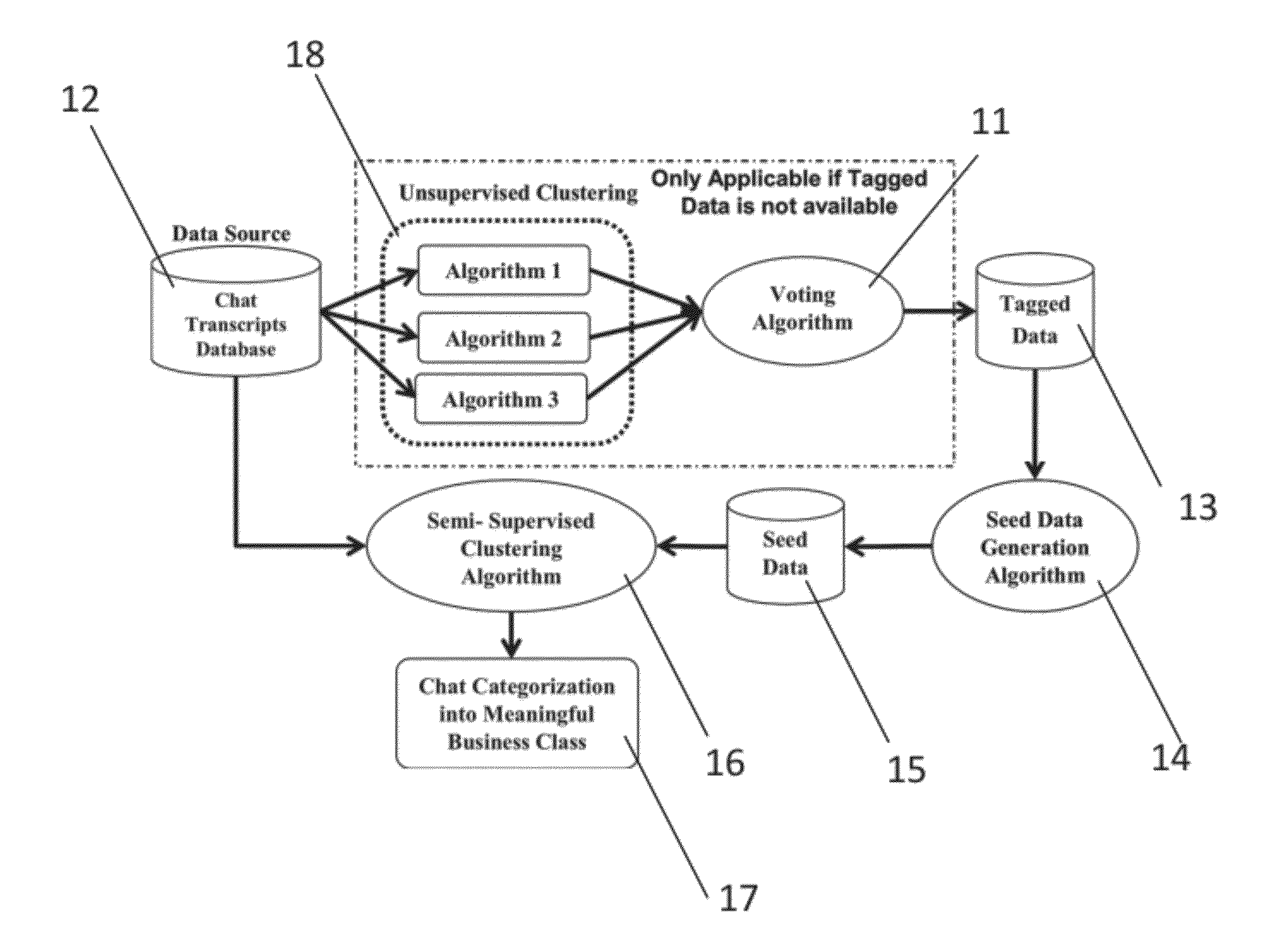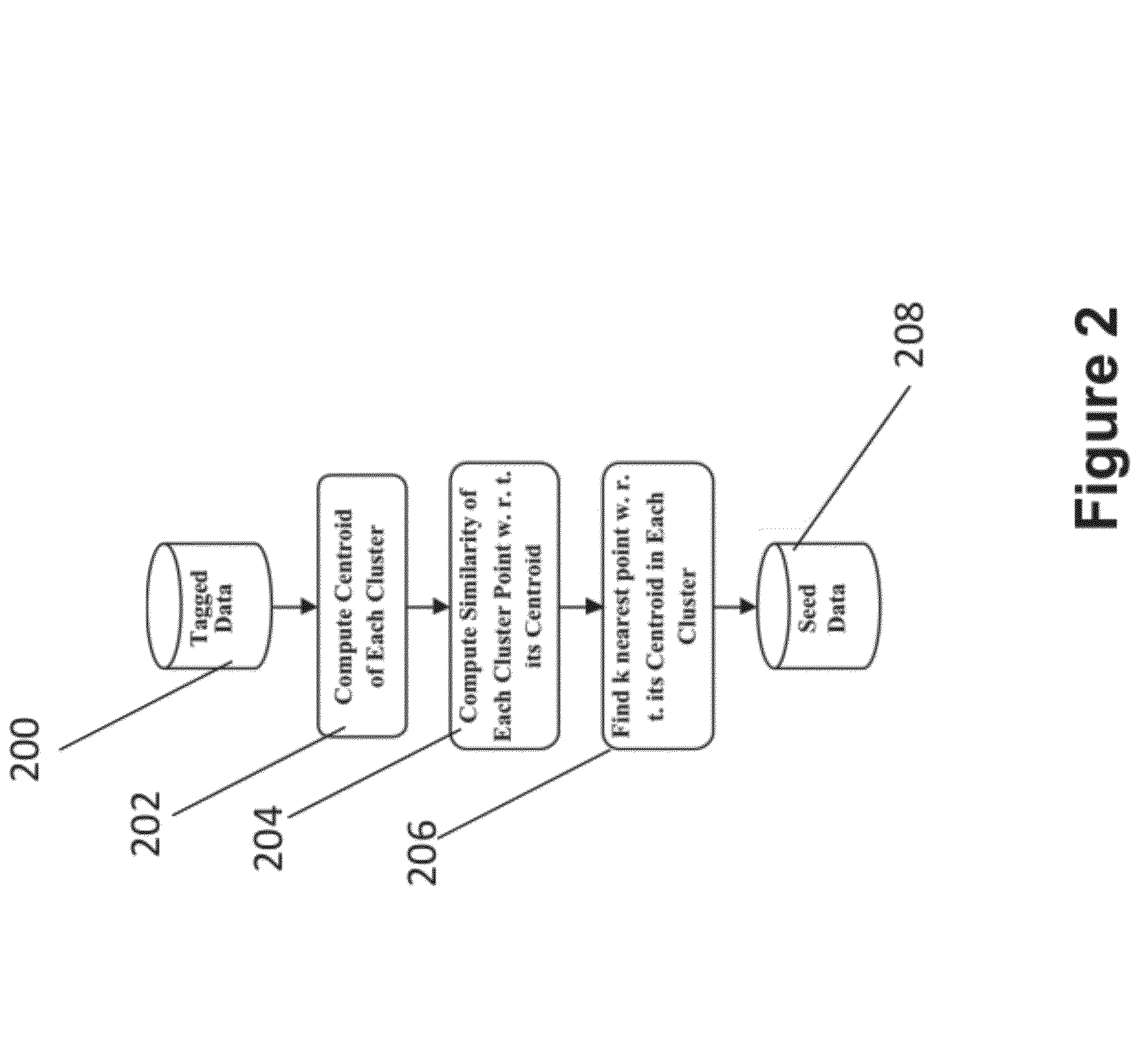Chat Categorization and Agent Performance Modeling
a technology of agent performance modeling and chat categorization, applied in the field of text mining driven voice of customer analysis, can solve the problems of never being undone, no chat categorization is found suitable, and the number of clusters is to be known a priori, so as to achieve the quality of service interactions
- Summary
- Abstract
- Description
- Claims
- Application Information
AI Technical Summary
Benefits of technology
Problems solved by technology
Method used
Image
Examples
Embodiment Construction
Chat Categorization
[0070]Voice of the Customer (VOC) Analysis over unstructured data sources, such as chat transcripts, emails, surveys, etc. are becoming popular for wide variety of business application viz. customer relationship management, prediction of customer behavior, etc. Chat categorization is considered one of the essential tasks to generate VOC.
[0071]In the past, many supervised and unsupervised methods have been proposed for text categorization, but none of them are suitable for chat categorization due to the paucity of labeled data and irrelevant cluster formation. An embodiment of the invention provides a novel semi-supervised clustering approach to chat categorization that not only considers the valuable domain knowledge, but also categorize chats into meaningful business classes. The disclosed technique also addresses a fundamental problem for text categorization which arises due to the skewed class distribution. The effectiveness of the disclosed technique has been ...
PUM
 Login to View More
Login to View More Abstract
Description
Claims
Application Information
 Login to View More
Login to View More - R&D
- Intellectual Property
- Life Sciences
- Materials
- Tech Scout
- Unparalleled Data Quality
- Higher Quality Content
- 60% Fewer Hallucinations
Browse by: Latest US Patents, China's latest patents, Technical Efficacy Thesaurus, Application Domain, Technology Topic, Popular Technical Reports.
© 2025 PatSnap. All rights reserved.Legal|Privacy policy|Modern Slavery Act Transparency Statement|Sitemap|About US| Contact US: help@patsnap.com



